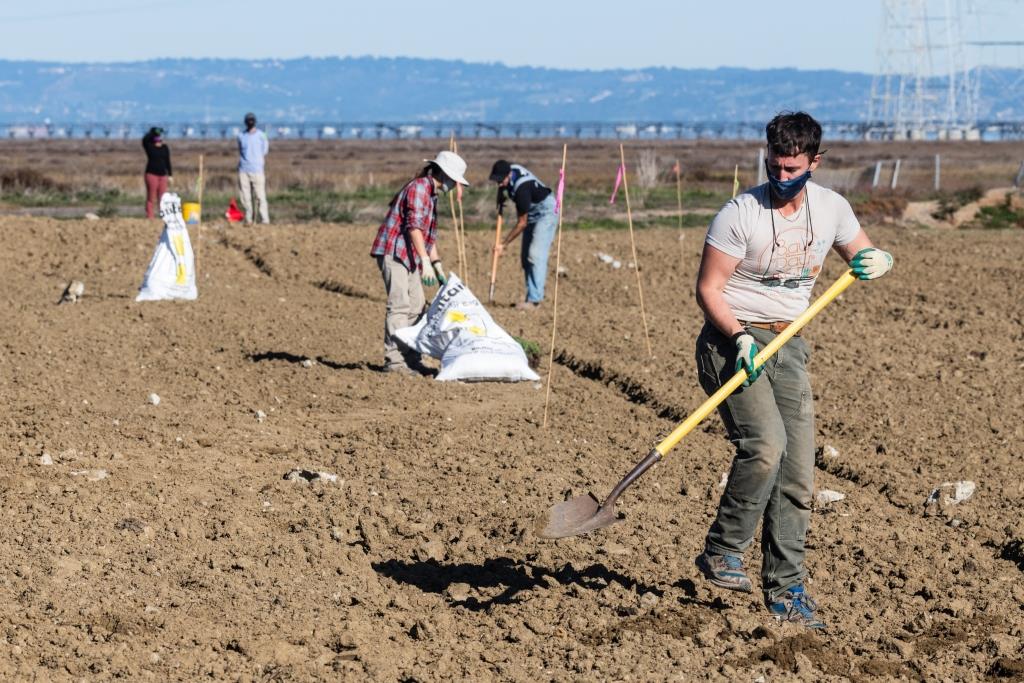Another Partnership: Save The Bay
If you’ve been reading this blog at all – and I know that you have Mom, so don’t try to deny it – you know that we feel strongly about the importance of partnerships to the success of our Project.
This blog has already featured a couple: I wrote about the Ravenswood-area stormwater management effort called the Bayfront Canal and Atherton Channel Project, and Julie Beagle and I wrote about how we and the Army Corps of Engineers are planning for a pilot project to test the strategic placement of dredged sediment. Those are fun reads if you haven’t already seen them.
Clearly, the importance of partnership is a topic that bears some repeating. And that’s what this post is about, too.
I’ve written before about ecotone slopes, which are also called habitat transition zones, upland transition zones, or even horizontal levees. Those terms are a little jargony, which my editor always scolds me for, so let me first explain that. These important landforms are essentially gently sloped piles of dirt that connect the bottoms of former salt ponds to the uplands or levees behind them. In the salt-making days, the ponds themselves tended to be like big bathtubs, with steep sides leading down to a flat bottom. That means they only have very small amounts of habitat at each elevation. In a natural system, there are broader slopes extending down from the uplands, through the various marsh elevations, and into the tidal mudflats. This gives animals more space to hang out as the tides rise and fall and makes it easier for them to make it to higher ground during storms and as sea levels rise.
We are trying to recreate something like these natural slopes by bringing in dirt and placing it in the ponds to build these habitat transition zones. We are doing that now at the Mountain View Ponds, the Ravenswood Ponds, and in the far South Bay near Alviso at the A8 Ponds. We’ve got more habitat slopes planned for Eden Landing in the coming years.
But what happens once the dirt is in place?
In the lower portions of these habitat slopes, the tides will bring in propagules of pickleweed and other plants, and they settle out on the sediment and start growing. So that part is easy.
But in the middle and upper portions of these features, we need to get some native plants in there so that the whole thing doesn’t just become a weed farm.*
Weeds around the edges of tidal marshes tend to be invasive species that are good at growing in disturbed areas with nutrient-poor soils and low water conditions. These tend to be things like black mustard, fennel, Russian thistle, slenderleaf ice plant, and common mallow. These plants just move right in and can easily crowd out the native plants that we (and the marsh wildlife!) want to be there.
Where do our native plants come from? Well, we are extremely lucky to have a partnership with Save The Bay, which not only has some nursery space of its own but has also procured additional nursery space to grow those plants and develop seed collections for planting our habitat transition zones.
They don’t stop there, though! They also organize volunteer events wherein enthusiastic helpers (yes, you can join in!) plant the mature plants and spread the saved seeds in place.
It’s truly a heroic effort, with years of planning and investments of time and money and expertise to grow the plants in advance of us actually being ready to receive them.
Save The Bay recently completed planting on one of the two habitat slopes we have built at Ravenswood, and they are currently growing plants for the second one. They expect to complete planting late this fall.
In the next week or so, Jessie Olson of Save The Bay will contribute a guest post with more details on their fine work at Ravenswood and elsewhere.** I am eagerly looking forward to it!
*No…not that kind of weed farm. I mean, a dense thicket of weedy plants. Go back to the main text…you’ll see what I mean.
**Jessie also presented on this topic at our recent Science Symposium and did a terrific job. Check out the recording here if you didn’t see it live.


